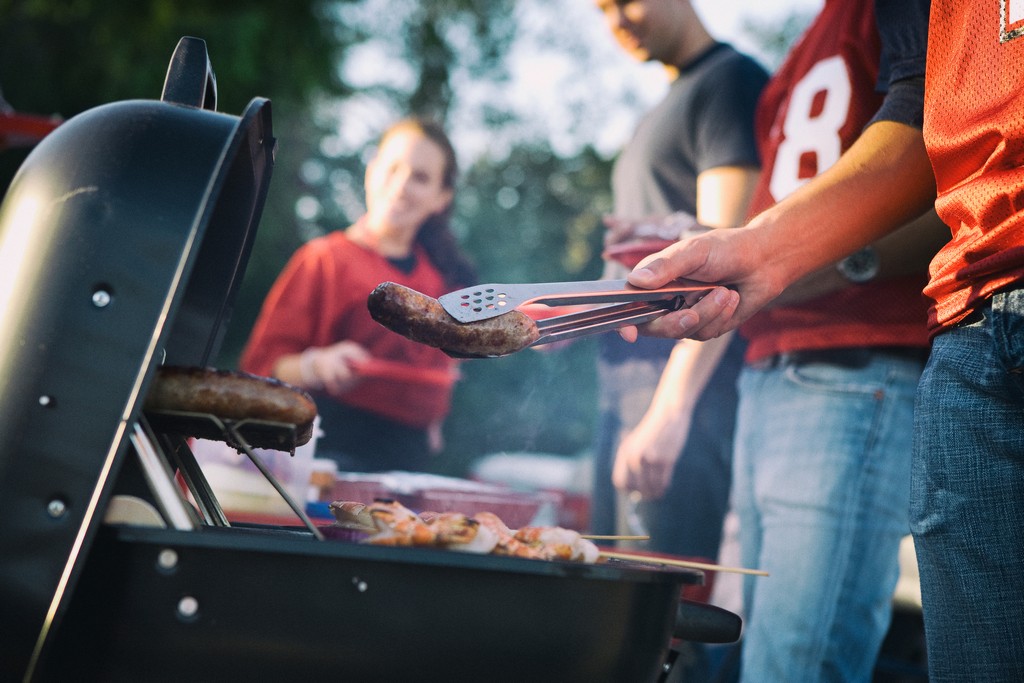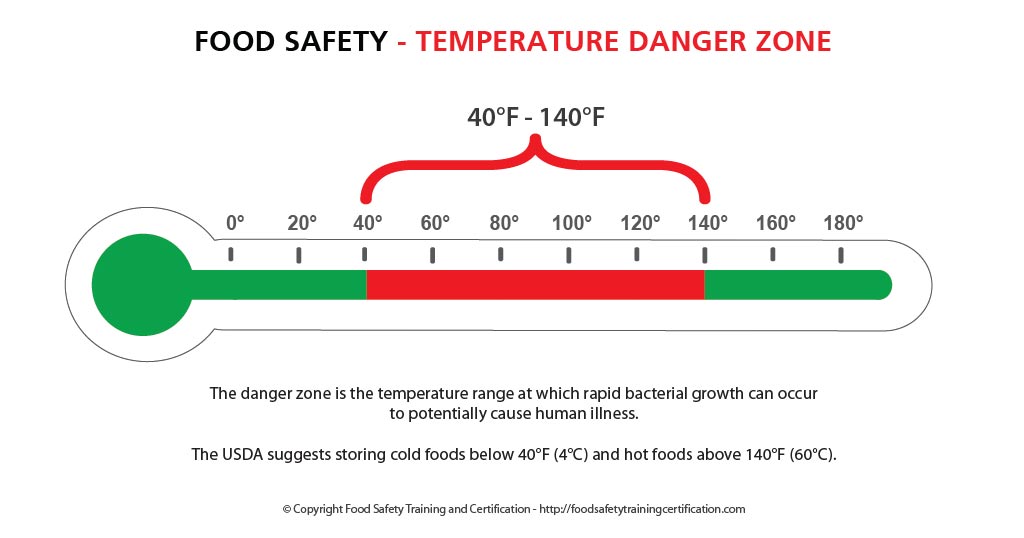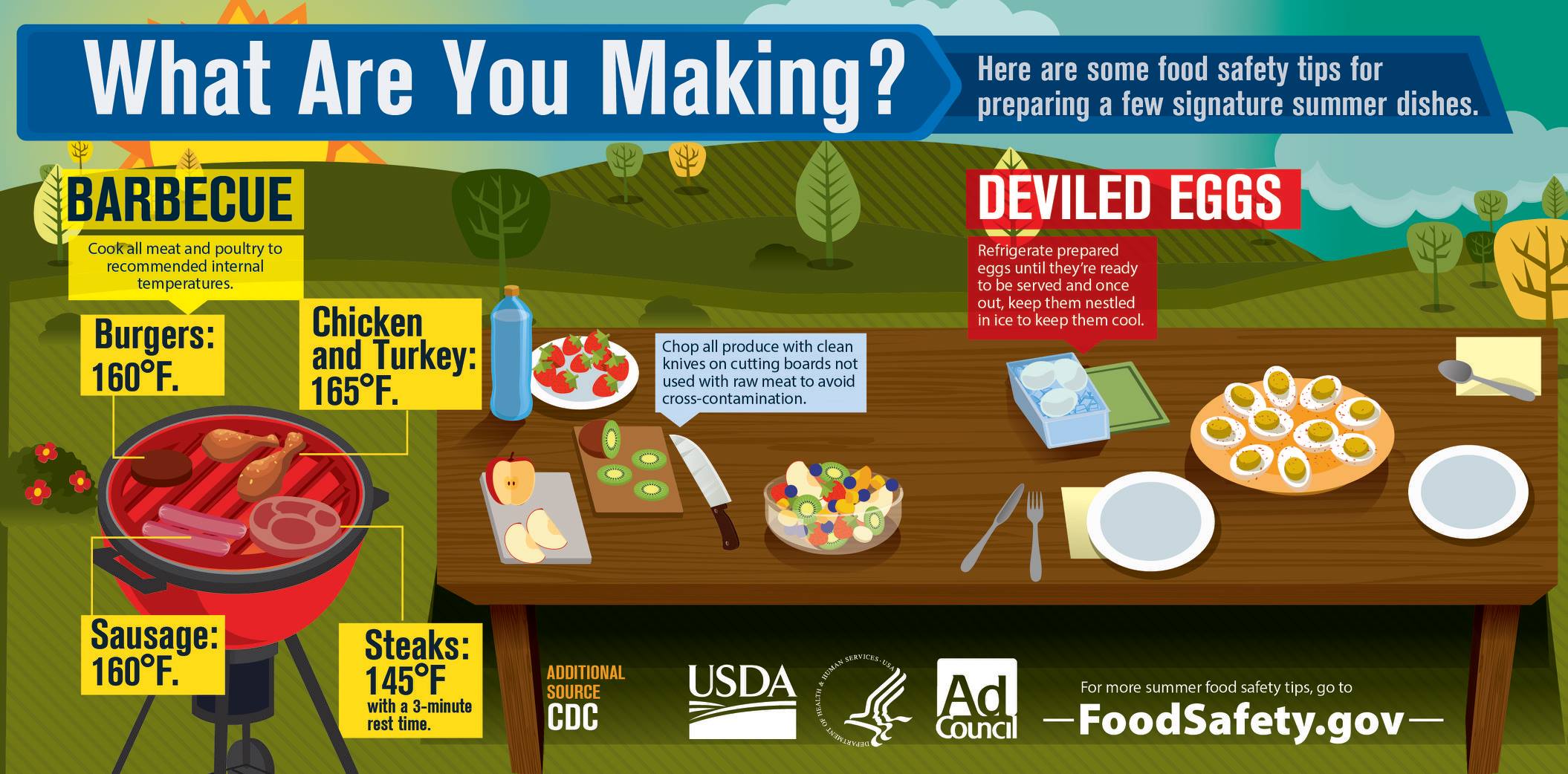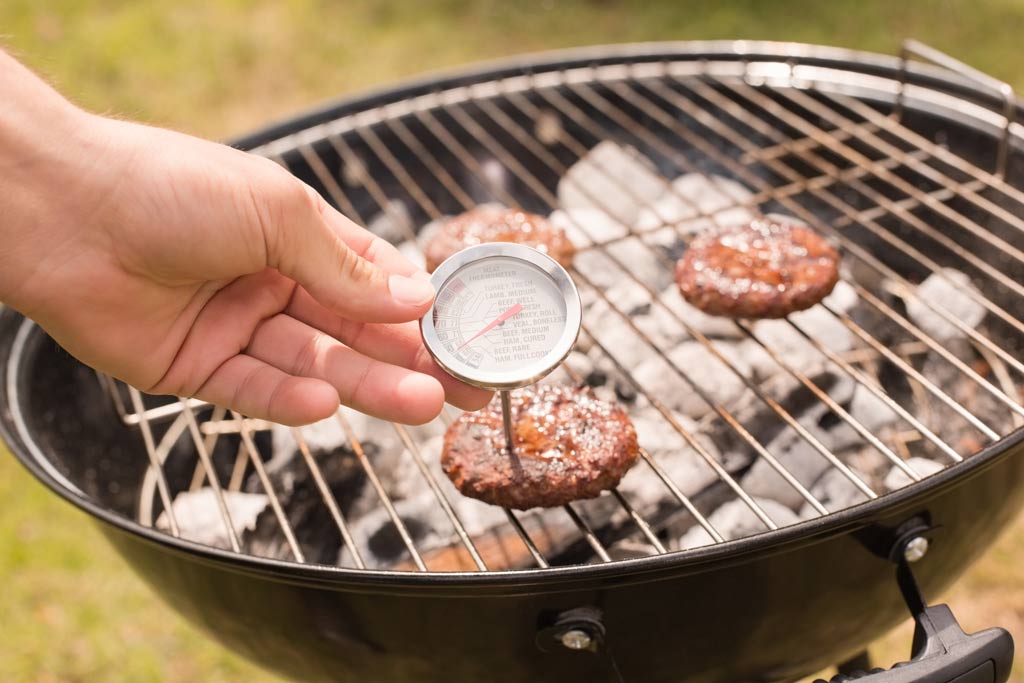Are you going to celebrate the weekend by throwing a grilling party? Make sure you have a plan that includes food safety and fire safety.
Practicing proper food and fire safety principles and procedures are the keys to having a safe weekend full of fun, food, and family time!

The Bacteria Danger Zone
Food illnesses increase during the summer – not only because bacteria multiply faster in warmer temperatures – but preparing food outdoors makes safe food handling more challenging.
One of the critical factors in food safety is controlling temperature. Bacteria grows very slowly below 40°F, multiply rapidly between 40°F and 140°F, and are destroyed above 140°F.

Food Safety Steps: Clean – Separate – Cook – Chill
Food poisoning peaks in the summer months when warmer temperatures cause foodborne bacteria to flourish. Follow these steps for a safe and enjoyable grilling season:

- Learn about foodborne hazards and pathogens, cross contamination, temperature controls, cleaning and sanitation methods, and the best practices to prevent foodborne illnesses.
- Food Manager ANSI Certification: SALE $99.00
- Food Handler ANSI Training for only $7.00!
- Enter Promo "train10off" at Checkout
Clean
- Wash Hands
Wash your hands with soap before and after handling raw meat, poultry, and seafood. Wash work surfaces, utensils, and the grill before and after cooking. - Check and Clean your grill and tools
Use a moist cloth or paper towel to clean the grill surface before cooking. If you use a wire bristle brush, thoroughly inspect the grill’s surface before cooking. Wire bristles from grill cleaning brushes may dislodge and stick into food on the grill.

Separate
- Shopping – When shopping, pick up meat, poultry, and seafood last, right before checkout. Separate them from other food in your shopping cart and grocery bags. To guard against cross-contamination, put packages of raw meat and poultry into individual plastic bags.
- Marinades – Throw out marinades and sauces that have touched raw meat juices, which can spread germs to cooked foods.
- Avoid cross-contamination – To prevent foodborne illness, do not use the same platter, cutting board or utensils for raw and cooked foods. Harmful bacteria present in raw meat and poultry and their juices can contaminate cooked food. Use clean utensils and a clean plate to remove cooked meat from the grill.
Cook
Use a food thermometer to ensure meat is cooked hot enough to kill harmful germs. When smoking, keep temperatures inside the smoker at 225° F to 300° F to keep meat a safe temperature while it cooks.
- Hamburgers, sausages and other ground meats should reach 160°F (71°C).
- All poultry should reach a minimum temperature of 165°F (74°C).
- Whole cuts of pork, lamb, veal and beef should be cooked to 145°F (63°C) as measured by a food thermometer placed in the thickest part of the meat, and allowed to rest for three minutes before eating.
- Fish should be cooked to 145°F (63°C).
- Cook eggs until yolks are firm, and cook foods containing eggs thoroughly.

Keys to Successful Grilling
- Fire up the grill early! A preheated grill will reduce the risk of sticking and will burn off remnants of charred food from previous grilling.
- Reduce grill sticking. Brushing the grill with a little oil will help to reduce sticking.
- Controlling heat is key. Most grills have hot and cold spots. You should use the “zones” to your advantage.
- Hot zones are good for searing, charring, preventing food from sticking, and cooking items quickly.
- Cool zones are good for imparting smokey flavor.
- Let food cook. Leave food alone until it releases from the grill. Turning often reduces proper charring and prevents those beautiful grill marks.
- Grill marks with the 2 o’clock–10 o’clock method. Angle the food initially at the 2 o’clock position, then flip and rotate it to the 10 o’clock position – to get a proper char cross hatch.
Chill
Keep meat, poultry, and seafood refrigerated until ready to grill. When transporting, keep below 40° F in an insulated cooler.
Divide leftovers into small portions and place in covered, shallow containers. Put in freezer or fridge within two hours of cooking (one hour if above 90° F outside).

National Fire Protection Association Grilling Safety
- Keep your grill at least three feet from your home, away from pets and kids
- Clean grill after each use. Meat produce a lot of fat, so keeping the grill clean will not only keep your meat tasting better, it will also protect you from the fires that flare up.
- Never use gasoline or any flammable liquid on your grill.
- Both propane and charcoal BBQ grills should only be used outdoors.
The National Fire Protection Association (NFPA) offers grill safely tips to prevent fires:
Grilling Food Safety Resources
Infographics
- Grill it Safe When Cooking Outdoors E-Card (PDF)
- Grill it Safe Card (PDF) | Side 1, JPG | Side 2, JPG
- En Español: Side 1, JPG | Side 2, JPG
- Four Steps to Food Safety from our Founding Fathers (Flickr)
